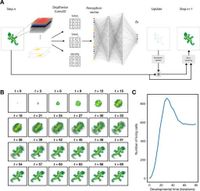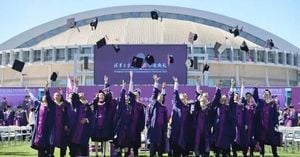Neuroscientists have made a groundbreaking discovery in the realm of biological development, demonstrating that evolutionarily conserved factors may not only be keys to life on Earth but can also emerge in entirely different systems. In a recent study published in Scientific Reports, researchers utilized a Neural Cellular Automata (NCA) model to explore how these early-stage transcription factors, typically preserved throughout evolution, can emerge in artificial systems.
The study presents compelling evidence that hidden units in the NCA model share properties akin to those of early factors in biological development. Surprisingly, the patterns observed suggest that these factors are not uniquely biological but rather fundamental control mechanisms necessary for the development of multicellular organisms, regardless of how development unfolds.
Transcription factors are proteins that play critical roles in regulating the expression of genes, guiding the complex process of development. The research team, comprising P.C.K. Chow and P.J. Bentley, set out to investigate whether the established roles of these factors in nature hold true in a computational model. Their findings indicate that not only can these early factors functionally manifest in NCA, but they can also learn and adapt developmental strategies, demonstrating the model's ability to generalize across various morphologies.
The methodology of their research involved creating an NCA model that simulates biological development without direct genetic input. Instead, it relies on a neural network that can adjust to environmental cues, allowing for multiple phases of development including expansion, differentiation, and pruning. The success of this model is evident: through training, it exhibited the emergence of early active units during the initial developmental stages, revealing remarkable similarities to homeobox genes found in biological systems.
According to the authors, "This finding suggests that the emergence of early generalised factors is not merely an arbitrary solution but a viable mechanism at the core of multicellular development" as demonstrated through experiments simulating a maternal environment to enhance growth patterns. The study's experimental design also incorporated manipulations of the hidden units, leading to significant disruptions when these critical elements were knocked out, thus paralleling findings in biological systems where similar genetic alterations lead to serious developmental consequences.
Throughout the experimentation process, distinct phases of growth were characterized in the NCA model, reminiscent of biological embryogenesis. Initially, cells formed a homogeneous state much like a blastula, followed by differentiation into specific structures and a later period of pruning, where excess cells were systematically removed to sculpt the final form.
One particularly intriguing aspect of the research is the model’s transfer learning capabilities. The researchers tested the NCA's ability to apply learned developmental strategies to new body forms, including various target animals such as snakes and ladybugs. After retraining, the model showed a capacity for rapid adaptation, demonstrating that knowledge gained from growing one morphology can significantly accelerate the learning process for others.
Retraining the model to grow a snake, for instance, resulted in the temporary formation of leg-like structures—vestigial traits reflective of its evolutionary history—as the system mined its previous knowledge of morphology before appropriately pruning them back. This phenomenon mimics the evolutionary adaptations observed in nature, where historical anatomical features may emerge as organisms evolve.
Furthermore, the study highlights the conservation of early active units during retraining across diverse morphologies. Many active units were maintained within the model, regardless of the anatomical similarity of the targets, reinforcing the notion that these early factors are pivotal in morphogenetic processes, both in nature and in artificial constructs.
Ultimately, this research not only enriches our understanding of biological conservation but also suggests a potential framework for synthetic biology and regenerative medicine. By elucidating the commonalities between artificial and biological development, researchers can better appreciate how foundational principles govern the emergence of complexity in multicellular organisms.
As the authors conclude, "If early generalised factors are not merely an arbitrary way, but the only viable way to achieve multicellular development, we can then examine examples such as homeodomain factors in biology in a new light... the evolutionary conservation of many fundamental sequences is an inevitable consequence of development." This landmark study reshapes our understanding of development, illuminating a central theme in evolutionary biology: the optimization of life through conserved mechanisms that have endured across eons.




